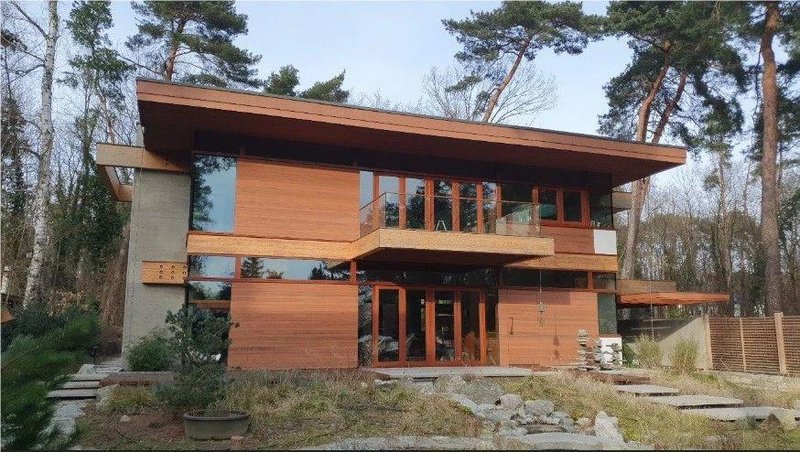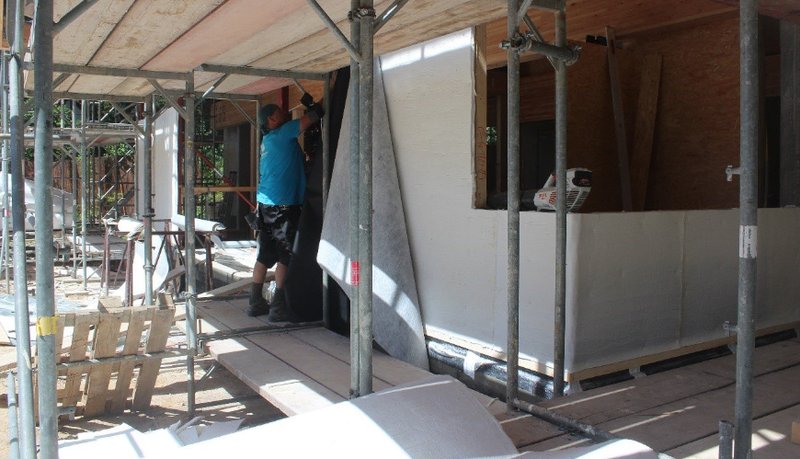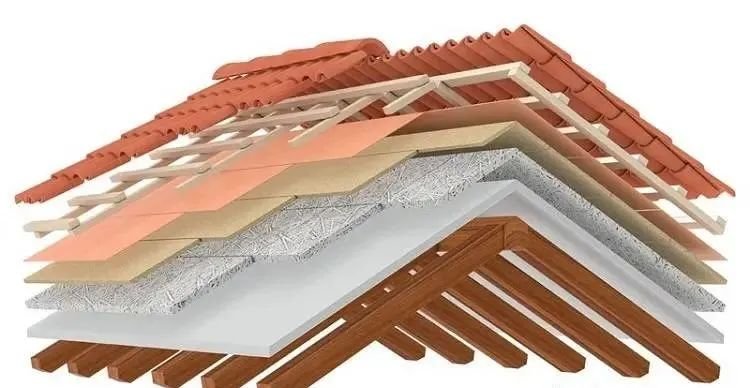Gel Residence Revolution: When Lightweight Aesthetics Meets Extreme Energy Saving
Amid the global challenge of reducing carbon emissions—40% of which stem from buildings—aerogel is disrupting the traditional belief that energy efficiency must come at the cost of bulk and aesthetics. This article uses the Triesch Residence in Berlin as a case study to illustrate how this nanoscale material slashes exterior wall thickness from 40 cm to 20 cm while achieving passive house-level energy performance. With an ultra-low thermal conductivity of 0.015 W/(m·K), aerogel solves insulation pain points in humid environments and eliminates thermal bridging—without compromising visual or spatial design. Through innovations such as precast concrete panels and mahogany composites, the project proves that energy conservation and elegant architecture can coexist. As major players like BASF and Aerogel-it scale the technology, aerogel is rapidly transitioning from premium solutions to mainstream housing, unlocking a new paradigm for sustainable living in the age of carbon neutrality.
I. When Energy Efficiency Meets Aesthetics: The Challenge of Traditional Insulation
In Berlin's Charlottenburg district, architect Lars Triesch stands before his new home. Its sleek mahogany façade and slender concrete columns embody a distinctly Californian modernist aesthetic. Yet, despite the -10°C winter outside, the interior maintains a constant, comfortable 22°C. The secret? Walls just 20 cm thick—thanks to aerogel insulation.
Globally, buildings account for 40% of carbon emissions. The EU mandates "nearly zero-energy" buildings by 2030, while China has raised the energy-saving standard for new buildings to 75%. Yet traditional insulation materials (mineral wool, polystyrene) have limited thermal performance (0.035–0.045 W/m·K), requiring ever-thicker walls. In Germany, passive house walls reach up to 60 cm; in northern China, even 80 cm—encroaching on indoor space, deepening window wells, and clashing with modernist design ideals.
Aerogel changes this equation. Made from silica nanoparticles, this “solid smoke” boasts 99.8% porosity and a thermal conductivity of just 0.015 W/m·K—one-third that of traditional materials. For the same insulation effect, only one-fifth the thickness is needed. Triesch’s vision to bring Ray Kappe–inspired lightness to Berlin architecture became feasible only through aerogel’s breakthrough properties.

II. The Triesch Residence: When Architecture and Materials Empower Each Other
In 2018, the project team faced a daunting question: How to preserve the mahogany façade, expansive glazing, and slender supports within Berlin's climate extremes—while meeting Germany’s EnEV energy efficiency code? Traditional materials required 40 cm walls, which would ruin the building’s proportions. Aerogel provided the answer.
1. Structural Innovation: Slimming Down Bulk
- Mahogany Composite Wall: By combining 3 mm of aerogel felt with 15 cm of mahogany board in a sandwich structure, the team blocked 98% of heat transfer. The resulting 20 cm wall reached an R-value of 3.2 m²·K/W—well above Germany’s 2.5 m²·K/W standard.
- Carbon-Reinforced Concrete Columns: Replacing conventional 30 cm concrete columns with 18 cm columns containing a 5 mm aerogel interlayer—and reinforced with carbon fiber—increased strength by 20% while meeting load and insulation needs.
2. Detail-Level Energy Efficiency Breakthroughs
- Windows and Doors: By embedding aerogel strips inside aluminum window frames, thermal conductivity dropped from 1.8 to 0.8 W/m·K. Combined with triple Low-E glass, the full window U-value reached 0.8 W/(m²·K), a 60% improvement over traditional designs.
- “Breathing” Roof: Aerogel spray formed a seamless 2 cm insulating layer on the sloped roof, preventing winter condensation and reflecting 30% of summer solar radiation—lowering top-floor temperatures by 3°C.
3. Aesthetic + Functional Success
Three years of performance data confirmed the design’s brilliance: winter heating demand is just 30 kWh/m²/year—half that of similar Berlin homes. With thinner walls, usable indoor space increased by 5%. Sunlight dances across the slim lines of mahogany and concrete, fully realizing Kappe’s vision of architecture in dialogue with nature.
1. Structural innovation: Slimming down heavy materials
III. Aerogel in Action: Building-Wide Energy Innovation
Aerogel’s impact extends well beyond wall thickness—reshaping insulation from top to bottom, inside and out.
1. Ultimate Moisture-Resistance in Humid Climates
Unlike traditional materials, which lose insulating power when wet, aerogel remains ≥99% hydrophobic. Its 2–50 nm pores block water vapor. In a Shanghai villa retrofit, aerogel interior walls eliminated condensation during the plum rain season, extending building life by 20 years.
2. Thermal Bridge Elimination
About 20% of building heat loss happens at structural nodes. Aerogel's flexibility allows it to wrap complex shapes tightly. In a London apartment project, using aerogel on HVAC piping cut heat loss by 70% and surface temperature by 17°C—ending condensation issues.
3. Invisible Ally of Passive Houses
Combining aerogel with building-integrated photovoltaics (BIPV) enables smarter skins: In a zero-carbon residence in Barcelona, aerogel layers increased solar power output by 15% (by reducing cell temperature) and used intelligent nano-pores to toggle between insulation and ventilation by season.
IV. From Landmark to Livable: The Commercial Breakthrough
Aerogel once cost ~¥380/m²—far from mass-market viability. But thanks to breakthroughs in ambient pressure drying by BASF and Chinese startups, costs have dropped below ¥200/m².
The Triesch Residence proves this isn’t just an eco-luxury: wall-thickness savings translate into higher rental revenue, and long-term energy savings (over 30 years) easily offset material costs.
Meanwhile, standardization is speeding adoption:
- Prefabricated aerogel panels (by Aerogel-it and Kahnt & Tietze) cut construction time by 40%, with precision within 1 mm.
- ASHRAE has added aerogel to its High-Performance Insulation Materials Guide.
- The EU is drafting an aerogel certification system.
In Parisian public housing trials, aerogel interior walls reduced tenants’ heating bills by 40%, while preserving the traditional aesthetic of French façades.

V. The “Breathing” Future of Buildings
From the Triesch rooftop, Lars Triesch remarks:
“Aerogel isn’t just an insulator—it’s a liberator of architecture.”
Indeed, when walls evolve from inert barriers into smart, multifunctional interfaces—blending insulation, daylighting, and design—a new architectural language emerges.
Soon, nano-sensors will allow aerogel walls to dynamically adjust pore openings based on indoor climate. Glass curtain walls will “shrink” pores in winter and open channels in summer—creating buildings that autonomously breathe, like living organisms.
This is the “thinking building skin,” and it’s redefining the zero-carbon home.

Conclusion
The Triesch Residence is more than a case study—it’s a manifesto for the future of sustainable architecture. With its nanoscale precision, aerogel solves the core paradox of energy efficiency versus aesthetics. No longer must buildings sacrifice beauty for performance or space for insulation.
Once reserved for NASA spacecraft, aerogel is now transforming family homes. This shift marks not just a material revolution, but a cultural one: proving that environmental stewardship and design elegance can coexist.
In tomorrow’s cities, every wall, window, and roof can become a breathing safety capsule—balancing comfort, performance, and beauty. The future is not only low-carbon—it’s lightweight, luminous, and alive.
LATEST NEWS
Why Does Metal Feel Cold and Wood Feel Warm at the Same Room Temperature? Unveiling the Magic of Thermal Conductivity!
2025-11-20
Innovative Aerogel Pipe Insulation Boosting Efficiency in Energy Industries
2025-11-17
Ordering and Specification Guidance for Aerogel Sheet and Pipe Insulation Products
2025-11-17
Luminescent Concrete Transforms Global Architecture with Light and Design Freedom
2025-11-13
Aerogel: The Ultralight Revolution – Transforming Industries with Unmatched Versatility
2025-11-11
